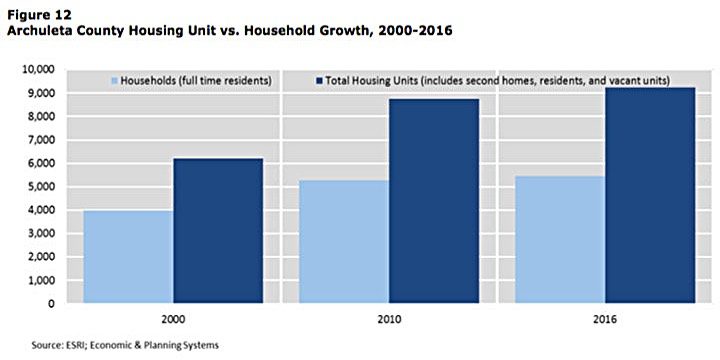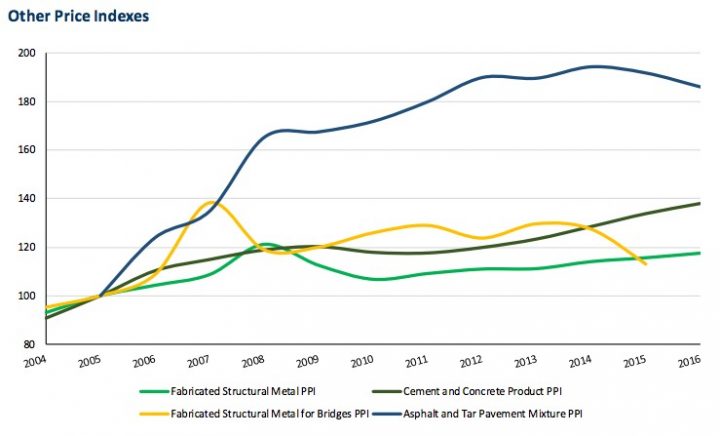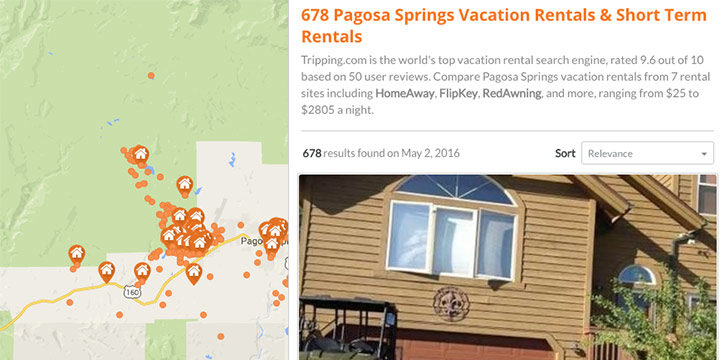The views from my windows, in downtown Pagosa, look out onto one of the community’s older neighborhoods, where nearly all of the home date from the first half of the 1900s, and where all of the streets were still dirt roads up until about 1992. Nowadays, we’ve paved most of the streets downtown, although in many cases the pavement has not been well maintained.
Out in the hinterlands of Archuleta County, nearly all of the homes were built after 1970, and the vast majority of the roads are still gravel, or dirt. I will go out on a limb and predict that most of these roads will never be paved, and the ones that have been paved will revert to gravel someday.
I make those predictions based on a few interesting pieces of information.
Close to 40 percent of the homes in Archuleta County appear to be second homes or vacation rentals. From the 2017 Archuleta County Housing Needs Study written by Denver-based Economic and Planning Systems:
There are two types of intermittently-occupied properties – second homes used on an occasional basis only by owners, and vacation rentals used as short term rental units. Based on a January 2016 report prepared for Region 9, an estimated 41 percent of residential properties in Archuleta County are owned by people whose primary residence is outside the County. In a survey of these homeowners, 12 percent of these homes were reported as part-time rentals and 11 percent as full-time rentals…
The situation is getting worse.
A second-home owner or vacation rental owner pays the same property taxes as those of us whole live here full-time. The taxes might amount to $1,500 a year, maybe $3,000 for a larger home. But otherwise, these absentees owners do not contribute in a meaningful way to the ordinary, year-round functioning of our community. Nevertheless, we must maintain the amenities our part-time visitors expect when they arrive for their week-long stay. Our County-funded airport, for example. Our Town-funded parks and trails… A full-service medical center… streets and roads… water and sewer services…
Generally speaking, Archuleta County’s part-timers are not exceptionally wealthy — like they are in, say, Aspen or Vail or Telluride. (And I’m certainly not encouraging Pagosa to become another Aspen.) And some of the second-home owners are planning to retire here someday, at which point they can become real contributing members of the community. But the challenge of maintaining a middle-class town that’s 40 percent vacant is almost unsurmountable. Especially with the rising cost of maintenance.
As noted in a previous Daily Post editorial, the Archuleta Board of County Commissioners recently approved a plan to spend up to $14 million (perhaps $24 million when you include interest payments) to build a new County detention center. The money to pay for that project will come at least partly out of the Road & Bridge budget, we’ve been told. That news would be painful enough, if we’d actually been keeping up with the maintenance of our existing roads. But looking into our probable future, things are not looking good.
According to a 2018 study done by the Minnesota Department of Transportation, the price of Asphalt and Tar Pavement Mixture has increased to more than 180 percent of its 2005 cost. (The dark blue line in the graph below.) Other highway materials have also increased in price, but at a somewhat slower rate.
Asphalt is one part of road and street maintenance costs here in Pagosa. Another part is equipment costs. And then we have personnel costs, which includes training of new employees. (Incidentally, Archuleta County Public Works is currently looking to hire two mechanics. Click here to apply.)
We can also mention, in passing, the declining attractiveness of Pagosa Springs as a place to find employment.
Millennials — the young people born between 1981 and 2000 — are now the largest generation of Americans, but their numbers are generally declining in rural America. Part of the problem: the American education industry has been advocating ‘college for everyone’ during the entire time the millennials have been growing up, so many of our kids leave high school to attend college in big cities, and never return. And as the millennials have graduated with an average of $20,000 to $30,000 in student loans, they’ve needed high-paying jobs to get themselves out of debt, (if such a thing is possible in 21st century America.)
Rural America is not known for high-paying jobs. The median weekly wage in Archuleta County, for example, is about $650 a week, before taxes. But 40 percent of our jobs are in the tourism industry, and typically pay even less than that.

Even suburban areas in America are struggling to attract millennials. Connecticut — the bedroom for New York City — has had a particularly hard time attracting millennials; suburban separatism has left its population divided and its cities and towns neglected.
So where are millennials going? The short answer: Big Cities. Over the past decade, Washington, D.C. has the highest percentage of millennials per capita, and New York City has seen the greatest total increase in millennials in the country. That’s a national trend, maybe even a global trend. But we have our own special trends, here in Pagosa Springs, that will ensure that very few young people will be able to locate here.
One trend that’s become especially popular here: buying up residential homes and converting them into Short Term Rentals — STRs.
Our County and Town governments have struggled, lately, with the knowledge that the growth of the vacation rental business over the past decade has seriously impacted our local housing market, for both single family homes and long-term rentals. Our governments are struggling with the knowledge that they’ve actually encouraged these vacation rentals, by spending millions in taxpayer revenues marketing our tourism industry. Their struggles have led to very little progress, however… in terms of aggressively addressing the problem… other than to require permits and relatively small fees.
Speaking personally, I find the priorities of the Archuleta County Republican Party leadership — construction of a new $14 million jail built upon a 25-year debt burden — to be absolutely fascinating, given the numerous challenges facing our little community.
But that’s only one part of the Big Picture.



